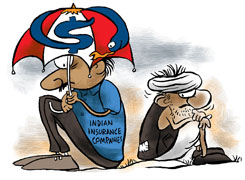Ramalingam Kalirajan |10908 Answers |Ask -Follow
Mutual Funds, Financial Planning Expert - Answered on May 09, 2024
He has an MBA in finance from the University of Madras and is a certified financial planner.
He is the director and chief financial planner at Holistic Investment, a Chennai-based firm that offers financial planning and wealth management advice.... more

Namaste Dev, I was doing a SIP of 5K in 22 increased to 10k in 23. Now doing 20k Below is my portfolio. Started From Jan-24 Aditya Birla Sun Life Gold Fund - Gr 2500 Started From Sep-22 Baroda BNP Paribas India Consumption Fund - Gr 1500 Top Up from Jan-24 Baroda BNP Paribas India Consumption Fund - Gr 1500 Started From Oct-22 Kotak Business Cycle Fund - Gr 2000 Started From Sep-22 Nippon India Flexi Cap Fund - Gr 1500 Top Up from Jan-24 Nippon India Flexi Cap Fund - Gr 1500 Started From Aug-23 NJ ELSS Tax Saver Scheme - Gr 3000 Started From Jan-24 SBI Blue Chip Fund - Gr 2500 Started From Aug-19 Tata Equity P/E Fund Gr 2000 Top Up from Jan-24 Tata Equity P/E Fund Gr 2000 Please Can you review it. Thank you in Advance Rohith Adiga
It's great to see your disciplined approach to investing and the gradual increase in your SIP contributions. Let's review your portfolio to ensure it aligns with your financial goals and risk tolerance:
1. Aditya Birla Sun Life Gold Fund: Investing in gold can provide diversification and act as a hedge against market volatility. However, gold funds may not always generate significant returns compared to equity investments. Consider your allocation to gold based on your overall portfolio strategy and risk appetite.
2. Baroda BNP Paribas India Consumption Fund: This fund focuses on companies benefiting from India's consumption-driven growth story. Given the potential of the Indian consumer sector, this can be a valuable addition to your portfolio. Monitor the fund's performance and ensure it remains consistent with your investment objectives.
3. Kotak Business Cycle Fund: This fund aims to capitalize on economic cycles by investing in sectors poised for growth during different phases of the business cycle. It's essential to review the fund's sector allocation and performance regularly to assess its suitability in your portfolio.
4. Nippon India Flexi Cap Fund: Flexi-cap funds offer flexibility to invest across market capitalizations based on market conditions. This can provide diversification and potentially higher returns. Monitor the fund's performance and ensure it aligns with your investment objectives.
5. NJ ELSS Tax Saver Scheme: Investing in ELSS funds offers tax benefits along with the potential for wealth creation over the long term. Ensure that your investment in this fund complements your overall tax planning strategy and retirement goals.
6. SBI Blue Chip Fund: This fund invests in large-cap companies with a track record of stable earnings and growth. It can provide stability to your portfolio while offering potential returns. Regularly review the fund's performance and adjust your allocation if needed.
7. Tata Equity P/E Fund: This fund follows a unique investment approach by focusing on companies trading at attractive price-to-earnings ratios. While this strategy can be rewarding, it may also carry higher risks. Monitor the fund's performance and consider your risk tolerance before making further investments.
Overall, your portfolio appears well-diversified across different sectors and market capitalizations. However, continue to monitor each fund's performance and ensure they remain in line with your investment objectives and risk tolerance.
Best Regards,
K. Ramalingam, MBA, CFP,
Chief Financial Planner,
www.holisticinvestment.in
You may like to see similar questions and answers below
Abhishek Dev | Answer |Ask -Follow
Financial Planner - Answered on Oct 03, 2023
Ramalingam Kalirajan |10908 Answers |Ask -Follow
Mutual Funds, Financial Planning Expert - Answered on Apr 12, 2024
Samraat Jadhav |2514 Answers |Ask -Follow
Stock Market Expert - Answered on Apr 17, 2024
Samraat Jadhav |2514 Answers |Ask -Follow
Stock Market Expert - Answered on May 06, 2024
Ramalingam Kalirajan |10908 Answers |Ask -Follow
Mutual Funds, Financial Planning Expert - Answered on Jul 09, 2024
Reetika Sharma |434 Answers |Ask -Follow
Financial Planner, MF and Insurance Expert - Answered on Dec 22, 2025
Ramalingam Kalirajan |10908 Answers |Ask -Follow
Mutual Funds, Financial Planning Expert - Answered on Dec 20, 2025
Ramalingam Kalirajan |10908 Answers |Ask -Follow
Mutual Funds, Financial Planning Expert - Answered on Dec 20, 2025
Naveenn Kummar |237 Answers |Ask -Follow
Financial Planner, MF, Insurance Expert - Answered on Dec 20, 2025
Ramalingam Kalirajan |10908 Answers |Ask -Follow
Mutual Funds, Financial Planning Expert - Answered on Dec 19, 2025
Nayagam P P |10859 Answers |Ask -Follow
Career Counsellor - Answered on Dec 19, 2025
Ramalingam Kalirajan |10908 Answers |Ask -Follow
Mutual Funds, Financial Planning Expert - Answered on Dec 19, 2025
Ramalingam Kalirajan |10908 Answers |Ask -Follow
Mutual Funds, Financial Planning Expert - Answered on Dec 19, 2025
Ramalingam Kalirajan |10908 Answers |Ask -Follow
Mutual Funds, Financial Planning Expert - Answered on Dec 19, 2025
Radheshyam Zanwar |6751 Answers |Ask -Follow
MHT-CET, IIT-JEE, NEET-UG Expert - Answered on Dec 19, 2025












.jpg)













